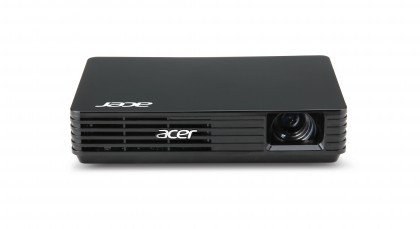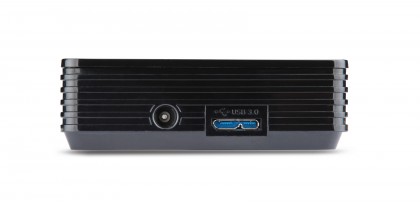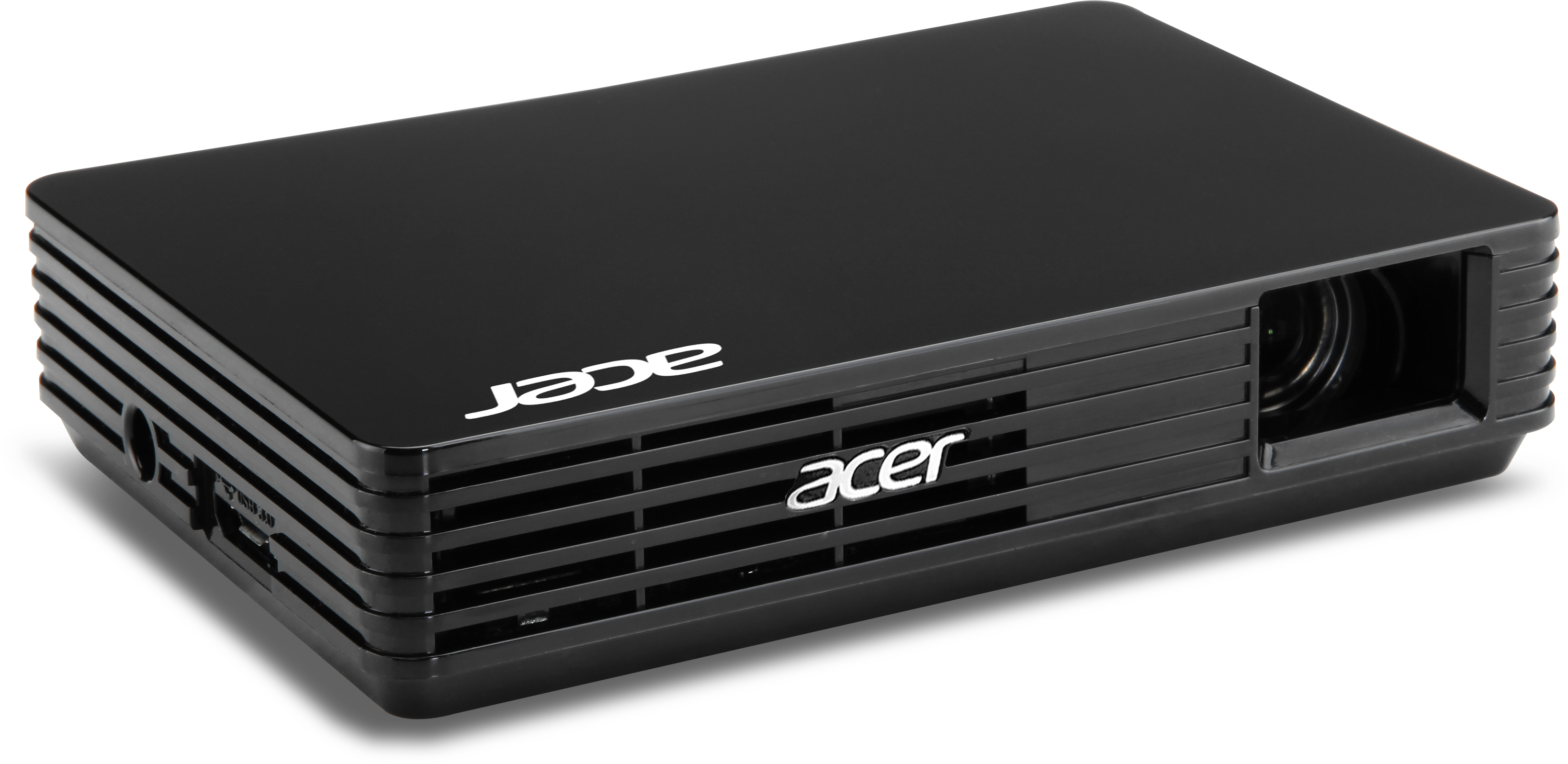Why you can trust TechRadar
It's not the best or the brightest, but when it comes to portable projectors on a budget, Acer has got it nailed. Achieving around 100 Lumens of brightness, this tiny micro projector – one that gets all of its power from the USB ports of a connected laptop – is the darling of the portable Powerpoint presentation.
It weighs a mere 304g and measures just 120x82x26mm, but it's not just the C120's size that impresses. Costing £209.99, it's comfortably the cheapest Pico projector we've seen so far, too.
Specifications
It might fit in a pocket more easily than your lunchtime sandwich, but there are limitations that make the C120 suited to a relatively small clientèle; its unfriendliness to Macs, as well as its need for two USB ports on a PC laptop, make sure of that.
The resolution is hardly a revolution, either. At 854x480 it's far less than high definition; its maximum 1280x800 pixel resolution signal is also slightly limiting, but the C120 was never meant to replace a home cinema projector or even have anything to do with movies. This is a Powerpoint projector, plain and simple.
Indeed, it doesn't even have a user interface to speak of. Plugged into the side of a PC laptop – something that unfortunately necessitates using not just two USB slots, but two side-by-side USB slots (wince, Ultrabook owners) – the C120 fuels itself and acts as a simple desktop projector.
The cable provided has two USB slots on one end and a proprietary Acer-made figure-of-eight connection on the other.
There's also a small fake-felt bag for the C120, though it's so snug it's hard to fit the projector inside, and there's no room for the USB cable.
It's with its bulb that the C120 shows its true colours. It's a relatively weak DLP LED engine that makes the C120 so small and lightweight, though its 100 Lumens rating isn't the whole story. Besides the C120's connector slot is a DC power input, though there's nothing in the box.
That's a shame since the only other way to achieve full brightness is to be sure to use both USB terminals on a laptop, or else the brightness dims. With that in mind we went looking for the darkest recesses of our test rooms to give the C120 a try.
Performance
Setting-up the C120 isn't difficult at all, but nor is it flexible. There's almost nothing to it; plug it in to a laptop's USB slots and – after engaging auto-play of an EXE file stored on the C120 itself – drivers installed on the C120 itself will mirror or extend the desktop. On the bottom of the C120 is a tiny kickstand, but it's so small that we can't see any use for it. It may raise the image slightly, but doing so creates a mis-aligned image – and there's no keystone correction to address that problem.
Having sat the C120 on a coffee table opposite a projection screen in a complete blackout, we settled on a 50-inch image from about 1.5m; any more than that and the pixel grid begins to reveal itself, and the detail drops to a disappointing level.

There's actually nothing else to detain us here aside from a slightly sticky manual focus dial – what with there being no user interface or any kind of image adjustments – so we'll move on to the quality of the projected image.
It's good, but not great, with the main issue being its lack of brightness. Crack open the curtains to let some daylight in, and the C120's impressive images fade alarmingly, so we'd recommend only using it in situations where you know you'll be able to predict or control the light levels.
Contrast – rated at 1,000:1 – is surprisingly significant, with a mono Powerpoint presentation in our arsenal containing both clean, pure-looking white and reasonably convincing black. The image is noticeably not HD quality, but crisp and precise enough. However, steer away from fine or small text – the C120 performs best with big, bold fonts. Add a little colour and the C120 does well, with graphs and graphics rendered with just enough lustre to impress.

Verdict
At 35 decibels, the C120 is whisper-quiet compared to most projectors, though it doesn't have the built-in speakers now common on beamers of all sizes; on a projector this tiny that would be pointless since it's smaller than the laptop it must be connected to.
We liked
The tiny size and – almost as useful – lack of bulky power pack and remote control makes the C120 mightily tempting. So does its slave-like simplicity, while the throughly usable picture quality is an added bonus.
We disliked
The need to have two USB slots for the supply of full brightness is a little odd, and the added requirement to have them very close to each other will instantly rule out many laptops and ultrabooks.
And no Mac compatibility? Given the popularity of the MacBook Air and Pro with road warriors, that's a big mistake, though Windows users won't give a jot about that.
Final verdict
Pride of place in Acer's Travel Series, the C120 will appeal to any road warrior who occasionally needs to quickly impress with an instant Powerpoint presentation. You will need a reasonably dingy environment and a room that's flexible enough for a straight-on image because zero adjustments are possible, but used wisely the C120 will have instant appeal to anyone obsessed with traveling light… as long as they don't own a MacBook.
Jamie is a freelance tech, travel and space journalist based in the UK. He’s been writing regularly for Techradar since it was launched in 2008 and also writes regularly for Forbes, The Telegraph, the South China Morning Post, Sky & Telescope and the Sky At Night magazine as well as other Future titles T3, Digital Camera World, All About Space and Space.com. He also edits two of his own websites, TravGear.com and WhenIsTheNextEclipse.com that reflect his obsession with travel gear and solar eclipse travel. He is the author of A Stargazing Program For Beginners (Springer, 2015),

